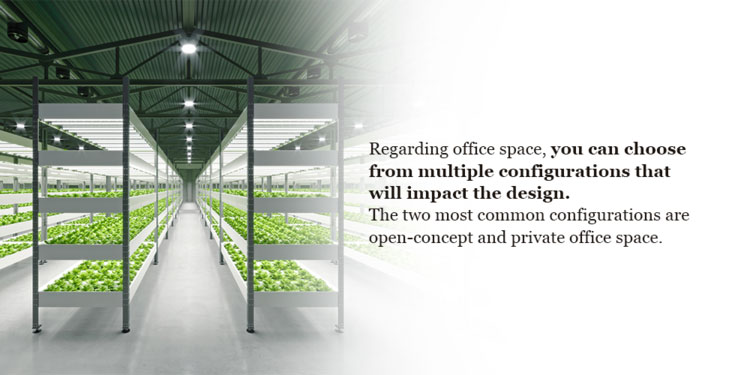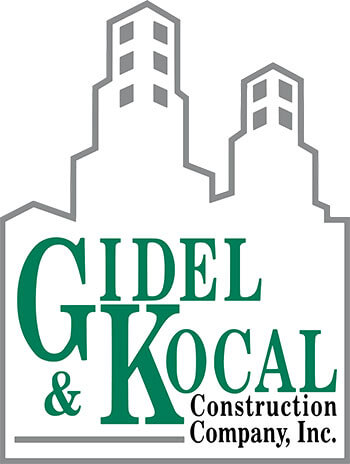
Life science is a growing industry, with many companies in the research, development and manufacturing of pharmaceutical, biotechnology and biomedical technology growing at astronomic paces. While there is always demand for new construction, building in the life sciences and life science conversions, including medical offices and new lab spaces, has great potential.
If you’re interested in the prospect of converting office space to labs and other life science spaces, check out the following tips from Gidel & Kocal Construction Co., Inc. on converting commercial space for use in life sciences.
Tip 1: Have a Thorough Existing Facilities Analysis
When you first approach a project, the first thing you’ll want to do is assess the existing facilities. Research and inspect what the building provides, and perform a thorough site history and assessment. Find out who owned the building in the past and what it was used for. Some businesses have a higher likelihood of leaching contaminants into the air and ground, so knowing how the building was used can inform you about any potential contaminations.
The planning doesn’t stop with the building history. The importance of pre-construction services cannot be underestimated. The construction company will work with you to establish essential factors, like scheduling, budgeting and quality assurance to make sure the teams can account for everything before construction begins. Examples of pre-construction services include:
- Design development
- Early budgeting
- Value engineering
- Conceptual scheduling
- Cost estimating
- Constructability reviews
- Plan reviews
With a thorough existing facilities analysis, you can evaluate the current building’s infrastructure to determine how suitable it will be for your intended purposes. For life sciences, this will include intensive considerations about the requirements of your specific life sciences facility.
Tip 2: Consider Key Factors
Every business has unique needs, but when approaching a construction project for a life sciences business, there are even more factors to consider. First, you will need to think about what kinds of special spaces you will need, how many offices you’ll have and what size they’ll be. Regarding office space, you can choose from multiple configurations that will impact the design.

The two most common configurations are open-concept and private office space. With an open concept office design, there will be wide open areas of space where you can either place desks or install cubicles after construction completes. Additionally, you will need to factor in whether you need to have loading zones, and if so, how many you will need — in addition to areas for receiving and storing special materials.
Besides office space and loading zones, you’ll need to think about key factors like specialized life sciences equipment and purposes that will influence design and construction.
Certain life sciences spaces require special construction considerations, including:
- Wet laboratories
- Dry laboratories
- High containment labs
- Cleanrooms
- Vivariums
- Aseptic facilities
- Pilot plants
- Pharmaceutical warehouses
- Manufacturing facilities
Some companies have a wide variety of functions in the industry, which may require multiple specialized spaces to consider when upgrading a commercial space. For example, high containment labs will need to meet specific regulations to ensure maximum protection, especially when manufacturing and using harmful chemicals and substances.
With these key factors to consider, choosing a company that’s an expert in life sciences construction will ensure your build conforms with industry regulations in addition to suiting your individual company goals and budget.
Tip 3: Plan for the Future
When building something, no matter if it’s a small family home or a multimillion-dollar high rise, the future is an important consideration. How long will the building materials last, what kinds of conditions might they have to endure and what changes might occur are all important things to think about for any construction project. When building in the life sciences industry, ensure the space you construct will be functional for years into the future.
Consider various trends when thinking about converting a commercial space for use in the life sciences industry, such as:
- Technology: Technology has jumped leaps and bounds and will continue to progress as the years come. New and emerging technology like drones and augmented reality can considerably impact the progress and pacing of your construction project.
- Sustainability: Many traditional building methods and materials have become costly in addition to negatively impacting the environment. Renewable energy sources, like solar and wind power, and sustainable building materials are things to consider as you approach design and construction.
- Software: Alongside trends that can affect the actual construction of projects, implement software solutions that can revolutionize project planning, from inception to implementation. Improve budgeting, scheduling and communication across multiple teams to ensure everyone is up to date.
When working with experts in the life science industry like Gidel & Kocal, they can help you create a space that will be modern yet fully functional for many years.
Tip 4: Consider Location
The life sciences industry is booming — there’s no question in that regard. However, there are particular sectors in which the industry is growing at a faster pace than the rest of the country. Boston in the east and the Bay Area in the west are two of the fastest-growing cities in life sciences. According to reports at the end of 2021, the demand for space increased 20% over a six-month period.
In contrast to recent trends in other industries, which saw employees begin working from home at an enormous rate, companies in the life sciences sector continued working from their offices and lab. In fact, many life science companies got even busier. This trend means the life sciences field is seeing an enormous boost in expanding construction.
In the Bay Area alone, there are 28.7 million square feet of potential real estate planned for future development. This means the market is especially competitive and development will continue to grow. If you’re looking to build in the Bay Area, be prepared to tackle development in this booming sector of the industry.

Contact Gidel & Kocal for Bay Area Life Science Construction
Whether you’re looking to convert a commercial space, upgrade your existing space or create a new build, Gidel & Kocal is ready to take on your life science project in the Bay Area and work with you from start to finish. As experts in life sciences construction, we are the perfect choice to guide you through your building project to ensure your build meets regulations and your individual company goals.
Gidel & Kocal has over 40 years of experience in the life science building industry, and we approach every project with dedicated service and communication to ensure you reach your goals. To learn more about our life science building services, contact our team today or give us a call at (408) 370-0280.
